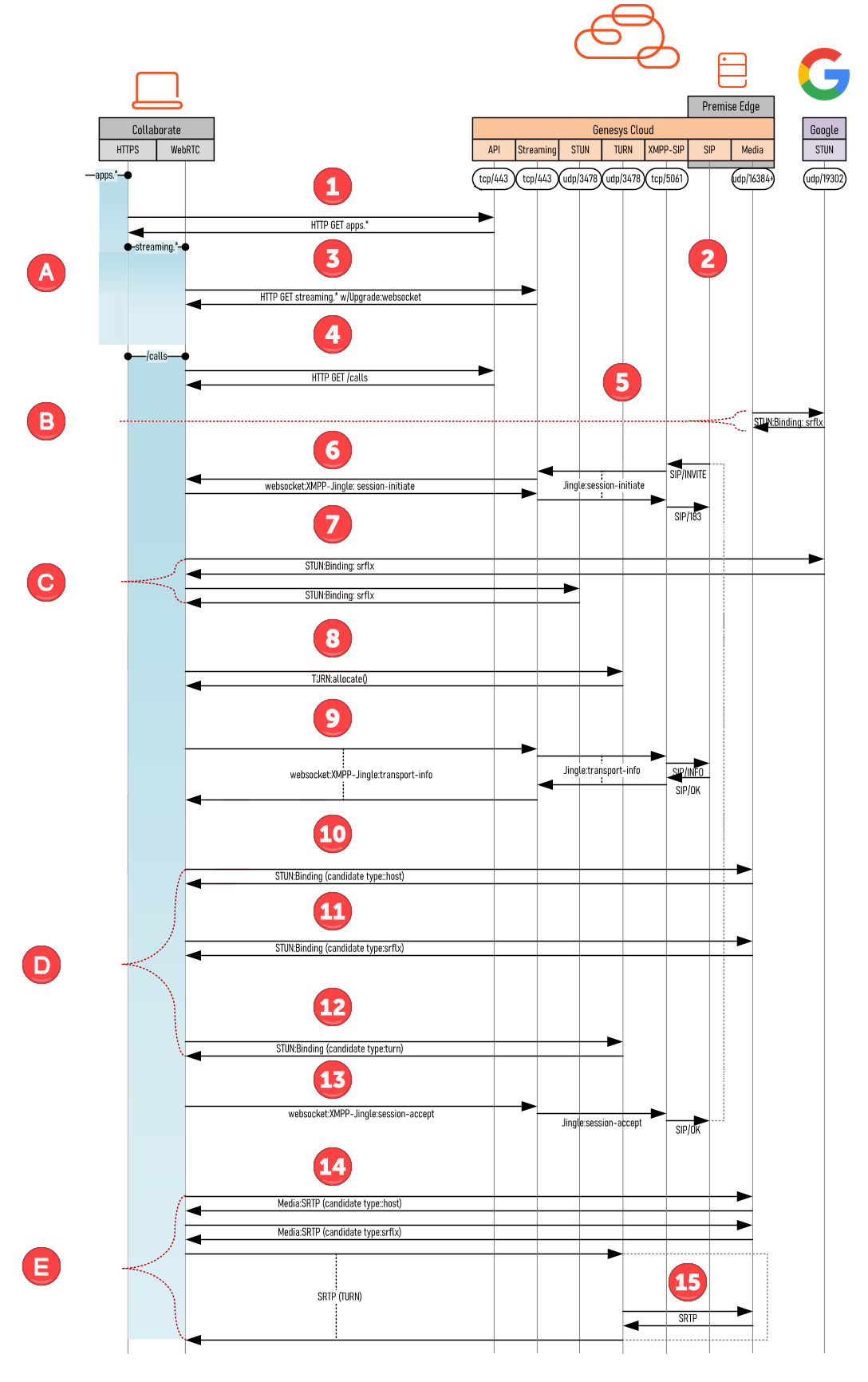| A websocket is established for all WebRTC signaling. The connection is created once and reused for all subsequent messages. A new connection is not created for the inbound low, so network access is not needed to establish an inbound connection. |
When a call is initiated the Cloud Media Service or Edge and the WebRTC Client will use a STUN requests to obtains its reflexive NAT address (the public address and port the same as the client appears on the public network). Multiple STUN requests are attempted. |
A symmetric NAT will not cooperate with the STUN process because a new translation will be created for the media flow. This will not allow the direct media path to proceed, which will result in using a TURN channel for the media flow. |
The client receives candidates from its peer and sends a Binding request as a connectivity check. The Binding response is used to validate the connection and confirm the expected path was used. If the client uses a different NAT address to contact the media endpoint than it used to contact the STUN server, that will be discovered, and a new peer reflexive candidate will be produced. |
Only one SRTP media path is required. A direct media path can be established between real IP addresses (BYOC Premise) or with NAT reflexive IP addresses (BYOC Cloud) If a direct media path is not accessible, then a TURNs channel can be used to work around network access or NAT issues. |











